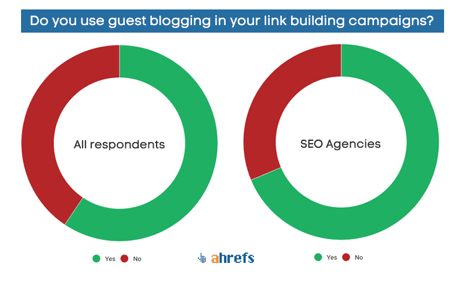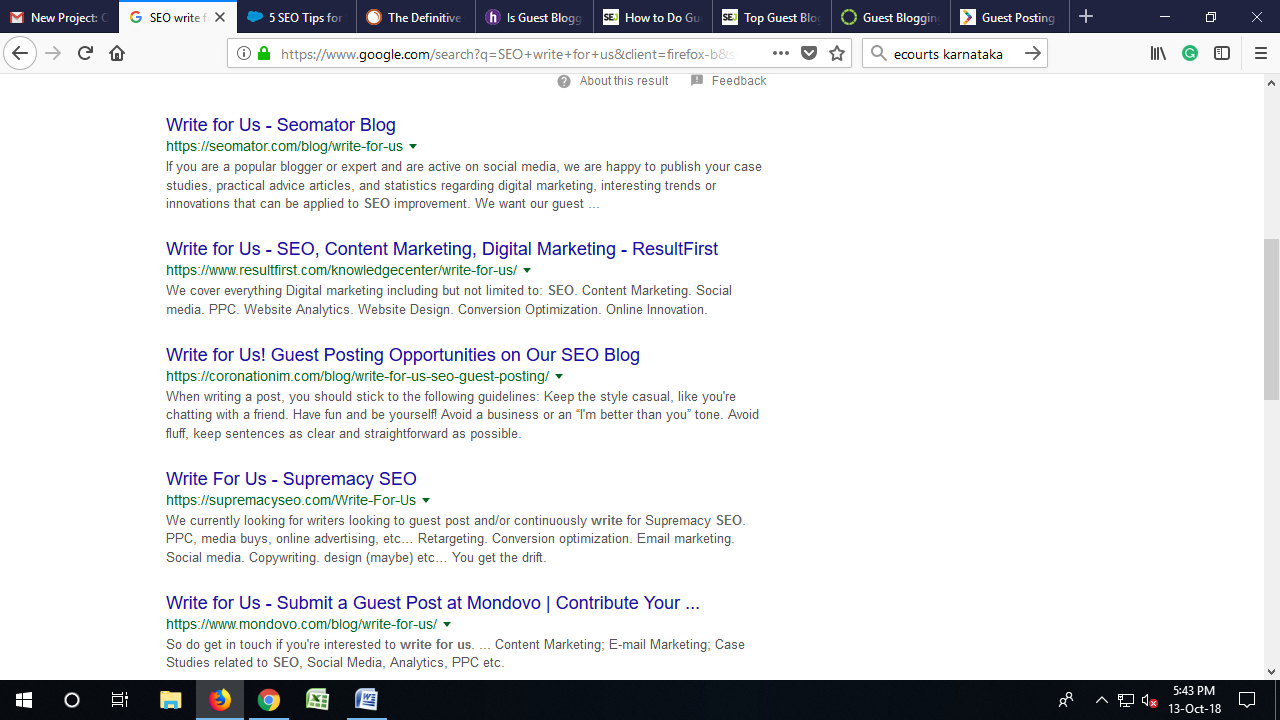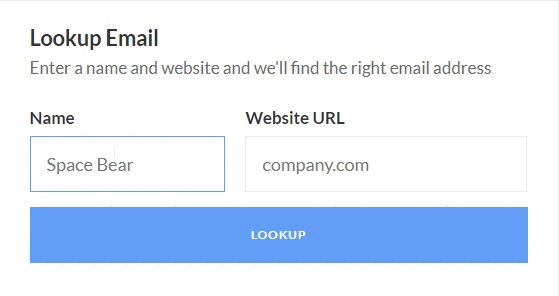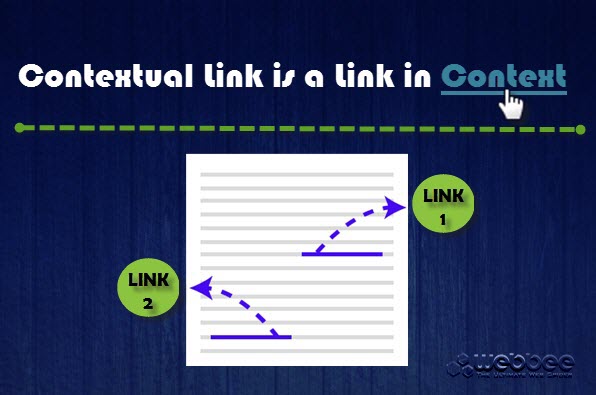How to Do Guest Blogging for Natural Looking Link Building

Are you still using guest blogging as a part of SEO strategy? Do you think it is dead?
Despite Google’s recent updates and changes over the past couple of years, guest blogging is still one of the most popular link building techniques. A proven technique yields good results. However, the main question here is the effectiveness of guest blogging for SEO.

(Source:cardinaldigitalmarketing.com)
Back in 2014, former Google head of web spam, Matt Cutts, announced a warning over follows that guest blogging from Google issued in 2017 about how guest blogging is abused to build links. That’s history now!
Guest blogging has huge potential to make your vision come true. It enhances online visibility and/or backlink profile – but you need not be Wordsworth of writing skills. All you need is an arsenal of natural-looking and free-flowing link building.
Guest Blogging – What is it?
Guest blogging is the strategy of publishing content on others’ websites. A very common digital marketing practice works well as SEO tool too. You can include a backlink to the website and enhance the chances of positive influence and visibility on search engine rankings.
Within Google’s own guidelines, there is nothing wrong in this strategy. According to a HubSpot report, 50% of marketers believe that blog creation is the top priority for inbound marketing. However, Google’s announcement was the result of some bad practices and misuse. As the potential SEO benefits of guest blogging are huge, some people have overused this technique to the extreme.
According to Matt Cutts statement about guest blogging, “it is overused by a bunch of low-quality, spammy sites.” He criticized guest posts written only for quick links with the purpose of manipulating Google’s algorithms to drive higher rankings instead of writing for people and contributing valuable and informative content.
Think Out of the Box
It is high time to think beyond links now.
According to Moz survey involving freelancers and agencies, 90% respondents admitted that they use some form of guest posting. Some giant players in the digital market are also using guest blogging in their link-building arsenal.
It’s no surprise that some of the famous entrepreneurs use this strategy for benefits regularly. Let’s take an example of Neil Patel who publishes 100 guest posts on an average per year. Likewise, Leo Widrish wrote 150 guest blog posts within a span of 2 months for building Buffer. The biggest surprise, however, is Julia McCoy earning $5,000 from just one guest blog post on the popular website, SitePro.
An Ethical Approach to Guest Blogging
Guest blogging, if not ethical, is meaningless. The most important thing to remember here is that you are creating content for other websites to add more than just a link. It is also for the purpose of delivering correct information to the target audience and educating them. Having said that, aiming for clicks and backlinks should be second only to the purpose of the blog. Following this approach, you can create ethical practices and follows Google’s guidelines perfectly.
So, let’s get started:
Step#1: Have the Right and Positive Approach
Whether you are a novice or ace blogger, always look for relevant sites with good quality content already published on them. It is very important to look beyond the face value of these sites before submitting your guest post. Focus on visibility, links, and traffic. You can use various tools to estimate how much traffic you can expect to guest blogging websites.
Good websites usually get a lot of traffic, which converts to visibility. While you are already there, see the backlink profile too. However, do not rely on any one metric to determine the quality of a guest posting site. Check out the backlink profile using tools like Moz or Ahrefs Open Site Explorer.
Finally, you have to focus on Google SERP visibility of the website. You can find it out yourself by using search operator site: domain.com in Google. If Google has not indexed a particular site, there must be the reason. Therefore, it is a red flag.
Most importantly, focus on sites belonging to a similar industry as yours. It ensures relevance and the right audience base for your content.

(Source:pixxelznet.com/)
Step#2: Choose a Brand
Would you like to link to a guest blogger with a cluttered and dingy website?
Definitely, not! There is no scope of such websites in the highly competitive marketplace.
So, the design, content, authority signals, focus, and domain of your site would directly affect the acceptability of your guest post. In fact, editors often hesitate to link to spammy affiliate websites filled with poor quality content, regardless of how great the guest post is.
Even before starting, make sure you check the brand viability, which includes:
- Modern and creative logo and design
- Social signs like Facebook, Pinterest, Twitter and LinkedIn
- Relevant and high-quality content
- Trust signals like names in testimonials and authority publications
- Important pages – About us, legal pages, contact us etc
Step#3: Find the Best Guest Blogging Opportunities
To start guest blogging, you need a detailed list of target guest bloggers. There are many ways of finding the right opportunity. Noted below are a few you might like to try:
- Google Search: Blogs maintain pages and solicit guest posts. These are generally easy targets as they share guest blogging guidelines. To find these pages, use the following search operators:
Keyword + Write to us
Keyword + guest post
Keyword + blogging guidelines
Keyword + contribute

(Screenshot)
However, this method only generally leads to poor candidates, though exceptions may happen. Top quality authority blogs do not solicit posts explicitly – they already have candidates wanting to write for them as well.
Another method to find the best guest blogging opportunity is to follow the footsteps of an influencer. Essentially, you can find some top influencers in your niche publishing guest posts frequently and target ever site they post.
Step#4: Approaching Target Guest Bloggers
Before sending pitches, you must find email addresses of your targets. For some sites, you would also have to establish a relationship with the editor.
To find emails, use tools like AnyMailFiner or Interseller.io.
Interseller.io asks you to enter the name of the target and domain, and they would find the rest.

(Source:www.interseller.io)
The best thing about Interseller is that it also verifies emails so you know you are getting the correct ones. It is cost-effective too.
Step#5: Devise Ideas
Once the list of email addresses is ready, you have to come up with guest post ideas.
Here, instead of creating something original, you have to focus on an idea based on what is already commonly working for the blog. You have to understand that your target blogs want more and more readers. When they develop an idea that has already worked for them over time, they are more likely to accept you in that spot.
To go with the flow, here’s what you should know:
- Check whether the article is an opinion write-up, step-by-step tutorial, how-to article etc
- What are the primary topics of the article/blog
- What type of language and words are included in the headline
Most importantly, your language should be easy for your target audience and no filler. SEO is the key to build backlinks. You must strive to pick up ideas aligning with the site too.
Step#6: Content Creation
Once ideas and concepts are approved, you can start the content creation process. Focus mainly on readability of content, which is very important. Keep sentences short, less than 20 words. Keep paragraphs within 3 sentences, add subheads as many as you want, use bullets and block quotes.
In addition, include custom images as it improves the quality of content, illustrates ideas and examples, makes the post much easier to read and understand, and improves the perceived value of the blog post.
Images also separate your blog posts from SEO spammers, thus making it more defined.
Lastly, get contextual links back to the site for better visibility and maximum SEO impact. It works like an editorial link, which gives you plenty of SEO matter.

Step#7: Go Online
Once the content goes to the editor, wait for a few days to hear the first feedback. Accordingly, make the necessary changes and wait for your blog post to go online.
Bear in mind that some of the large blogs earn quality backlinks. In addition, when you guest post on a blog, you develop a strong relationship for future opportunities.
Final Word
Quality guest blogging is not everyone’s cup of the team, which is why it is so influencing, and effective. Some of your competitors might have adequate patience and resources to ensure their content is published on the best top-tier blogs.
However, if the purpose of guest blogging is to build links only, it is not viable. But when used as an integral part of a marketing strategy in a broad sense, it leads to some top-notch backlinks. Publishing even a smaller volume of guest blogs on authority sites could give your business a significant boost affecting your rankings and traffic.

